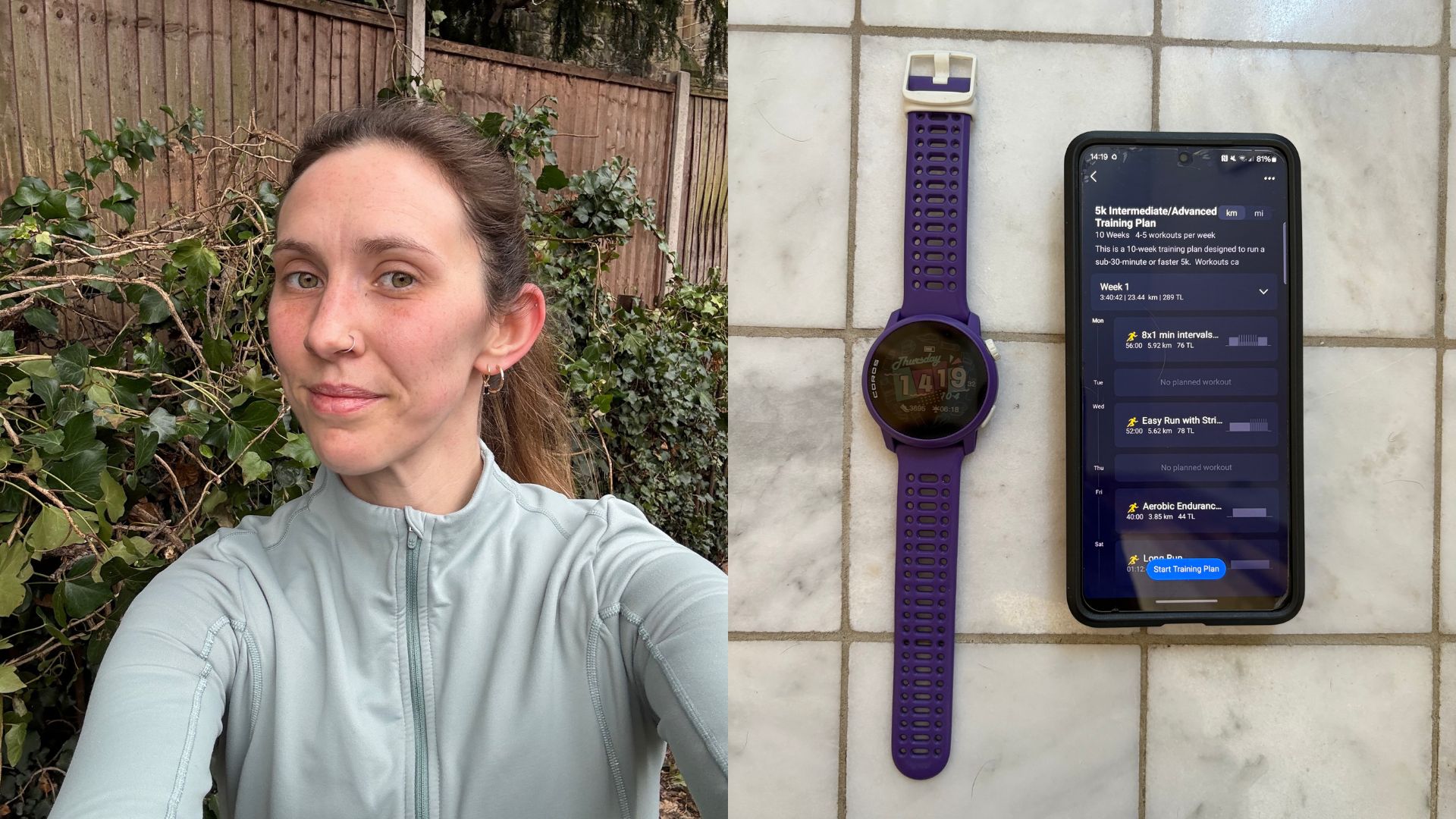Muscle recovery after workouts: what to do
Master muscle recovery after workouts with these tips and tricks


What’s the best thing to do for muscle recovery after workouts? If you can hardly walk down the stairs a few days after exercise, then we’re here to tell you the best things for muscle repair and growth.
When we exercise, our muscles stretch and contract causing the cells around the muscle fibers to go crazy knitting them back together – a process called hypertrophy. This makes them stronger and bigger, so the more you work out, the more defined and toned your muscles and body will be as a result.
There are lots of things that can help muscle recovery after workouts and we’re here to tell you more about it, from stretching, taking magnesium, getting quality sleep, and upping your protein intake (check out the best protein powder for weight loss for more on this).
This article will explain exactly what happens to our muscles when we exercise, why muscle recovery after workouts is so important, and what you can do to help them repair and grow for better strength, tone, and definition. For more on getting in shape, check out our guide to the best exercise machines for weight loss.
Muscle recovery after workouts: how it works
“Muscle recovery is important because it allows our muscle fibers to heal and helps prevent injury,” says personal trainer Marvin Ambrosius. “When exercising, muscles generate lactic acid as a byproduct and as this builds up, the Ph of the blood around our muscles drops. What you will notice is when getting back into exercising, your body will fatigue much faster and recovery time will be longer. That’s because our muscle fibers are pulling against one another and this causes Delayed Onset Muscle Soreness (DOMS).
“Simultaneously during this process, cells called fibroblasts work to produce connective tissue and they play an important role in muscle repair and recovery. Imagine doing a full-body workout and how your muscles would feel if you hadn’t been exercising regularly… we’ve all been there – DOMS for days!”
Muscle recovery after workouts: stretching
If you want to boost muscle recovery after workouts then a proper cool down and stretch are essential, says PT Marvin Ambrosius. “Stretching lowers body temperature and helps the heartbeat return to normal. The release of lactic acid during an intense workout is also broken with a good stretch – this allows muscle recovery and repair as blood circulation to the muscles is once again restored.”
Get the Fit&Well Newsletter
Start your week with achievable workout ideas, health tips and wellbeing advice in your inbox.
Aim for eight-10 post-workout stretches, holding each position for at least 10 seconds. Try and include a couple of ‘developmental stretches’ in the mix – these focus on increasing the length or flexibility of the muscle, and range of movement around a joint. Typically this kind of stretch is held for 10 seconds, then developed further for another 20 seconds.
A good example of a developmental stretch is Child’s Pose: kneel on the floor with toes together and knees hip-width apart. Rest your palms on top of your thighs. As you exhale, lower your torso toward the floor and walk your hands out in front of you, resting your head on the floor. Hold for 10 seconds, then take a deep breath and as you exhale walk your fingers out further in front of you, and hold for 20 more seconds for a deeper stretch.
Personal trainer Marvin Ambrosius, who is also Sky TV’s Fit in 5 host, told Fit&Well: “Stretching keeps your muscles active and will reduce tightness in the sore areas. Foam rolling, while painful, can also be very beneficial as it decreases muscle stiffness and breaks up adhesions and scar tissues that stop your muscles from functioning properly.” The best resistance bands can help deepen a stretch and don’t miss our article on the best foam rollers. For more on this, find out how to use a foam roller with these five tips.

Muscle recovery after workouts: magnesium
Magnesium is a key electrolyte that supports healthy muscle function by blocking calcium uptake, which helps the muscles relax after contracting during a grueling workout.
Magnesium also protects us from oxidative damage, which is increased as a result of the energy produced when we exercise. A study in the Journal of Strength and Conditioning Research found that it could help reduce the build-up of lactic acid – the cause of Delayed Onset Muscle Soreness (DOMS) – during training.
The recommended daily intake is 400-420 mg per day for men and 310-320 mg for women. Magnesium-rich foods include dark leafy greens like kale and spinach, as well as bananas, dark chocolate, nuts, and seeds.
You can also take a supplement, but transdermal or skin-absorbed products such as bath salts, lotions, and sprays are more effective as they are quickly absorbed and used by the muscles. A post-workout magnesium bath supports muscle recovery in two ways – first, you get the benefits of heat therapy, and as you replace depleted magnesium stores lost during exercise as you soak in the tub.
PT Marvin Ambrosius says: “For me, getting into a hot magnesium salt bath after exercise always makes my body feel so much better, and leads to a better workout performance next time.”
Muscle recovery after workouts: protein
As one of the building blocks of the body, protein is a macronutrient that is essential for growth and repair, as well as keeping us healthy. Too little protein and our muscles are unable to maintain their health and grow weak, undergoing a process known as “atrophy”.
Most adults need around 0.75g of protein per kilo of body weight per day (for the average woman, this is 45g, or 55g for men) - that's about two portions of meat, fish, nuts, or tofu per day.
We can get all the protein our bodies need from food, but protein powders are a quick and easy way to up your intake. For more on that, check out our articles on the best protein powders for women and the best protein powders for weight loss.
Fitness expert Marvin Ambrosius told Fit&Well: “Having a protein shake straight after your workout is great as you’re immediately starting to aid the recovery process. This also helps to reduce DOMS and means you won’t feel so stiff during your next session."

Muscle recovery after workouts: sleep
Want to boost muscle recovery after workouts? Don’t underestimate the power of sleep! When we’re asleep, vital muscle-building growth hormones are secreted. This hormone production typically happens during deep sleep, also known as stage three of non-REM sleep, or slow-wave sleep.
This accounts for 40% of total sleeping time and during this phase, your blood pressure drops and breathing becomes deeper and slower. Your brain is also resting with very little activity, so that means that the blood supply available to muscles can increase, delivering extra oxygen and nutrients which help healing and growth. This is the time when your muscles and tissues are relaxed and rejuvenated, and this whole process relieves tension and can reduce post-workout pain or DOMS.
But insufficient sleep means this production of growth hormones is impaired, leading to muscle stiffness and pain in the morning. A study by the Journal of Pain found that lack of sleep could even lead to chronic pain. Ideally, aim for seven-nine hours in bed nightly if you’re trying to lose weight and/or increase muscle mass.
Personal trainer Marvin Ambrosius adds: “During sleep, the muscle fibers heal and are stronger than before. But if you’re not getting enough sleep and are working out excessively you are not going to see many physical changes, could cause yourself an injury and you will feel constantly fatigued.”
Maddy Biddulph is a freelance journalist specializing in fitness, health and wellbeing content. With 26 years in consumer media, she has worked as a writer and editor for some of the bestselling newspapers, magazines and websites in the US and UK.
She is also a qualified L3 personal trainer and weight loss advisor, and helps women over 40 navigate menopause by improving their physical and mental strength. At Maddy Biddulph Personal Training, she runs one-to-one and small group training for menopausal women who want to get fit to ease symptoms and feel like themselves again.
-
 This is the exact running plan I followed for two months to finally get my 5K run time under 30 minutes
This is the exact running plan I followed for two months to finally get my 5K run time under 30 minutesAnd it helped me fall in love with running again
By Ruth Gaukrodger Published
-
 I increased my step count back to 10,000 a day after time off—here’s how I did it sustainably
I increased my step count back to 10,000 a day after time off—here’s how I did it sustainablyIt took me five weeks to get back to the ideal range
By Lou Mudge Published